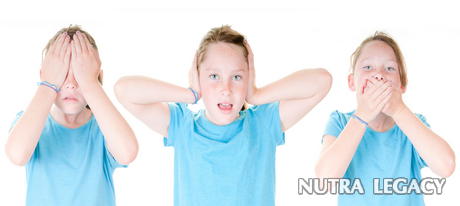Characteristics of emotional and behavioral disorders
In the world of emotional and behavioral disorders, it must be understood that there are various classifications. Each type of disorder has its own characteristics, but many of these symptoms do cross over to each other. Seriously emotionally disturbed equates to symptoms that have occurred over long periods of time and to such a degree that it impedes educational or socially functioning performance.

The classifications of emotional and behavioral disorders, according to the American Psychiatric Association, encompass a variety of areas. While there is no agreed-upon behavior disorder definitions, there are some terms that can be legally referenced as defensible. There are a few extreme subgroups that are included in these classifications: Schizophrenia, Autism, ADD (Attention Deficit Disorder), ADHD (Attention Deficit Hyperactivity Disorder) and Social Maladjustment.
Classifications of Emotional Disorders:
- Conduct: Disruptive behavior, acting out, seeking negative attention.
- Attention problems: poor attention and concentration easily distracted. Impulsive tendencies. May have attention deficit disorder.
- Motor excess: hyperactivity that keeps them from sitting still, focusing or listening. May Have attention deficit hyperactivity disorder.
- Socialized aggression: Typically involves joining groups that encourage disrespect to all people that represent authority. School delinquency and eventual drop out.
- Psychotic behavior: this individual has more unusual behavior than the other disorders. Individual may exist in a world of fantasy; develop their own unique form of communication that is indistinguishable from nonsense or even hallucinate.
- Anxiety or Withdrawal: The individuals are unsure of themselves, may have low self-esteem and lack of confidence.
There are quite a few factors that must be taken into consideration when investigating what causes emotional disorders. Family situations are a major concern. The dynamics within a family can influence the actions and reactions of a child. Mimicry of dysfunctional situations can create a dichotomy of confusion. With the advent of technology tools such as the MRI and the human genome research, there is evidence that biological circumstances plays a key role in emotional health. Alone or combined, neurological, genetic and biochemical factors may be involved in emotional or behavioral disorders. It is such a questionable topic that even when there has been some biological impairment, it is not clear if some other physiological problem exists.
Some of the outward symptoms of behavioral disorders can involve some or combinations of: Conflicts: self-injury, aggression, bullying behavior, going against standard rules, ignores direction, socially unacceptable behavior such as stealing or damaging property. Personal: crying, anxiety, socially withdrawn, constantly worrying, thoughts of death or suicide. Irresponsibility: typically involves individual not taking responsibility for actions and blaming others. Socially unpopular and withdrawn. Poor academics.
While many people may exhibit any of the symptoms throughout their lives, characteristics of emotional and behavioral disorders involve long term symptoms. Diagnosis is often difficult, especially when there are multiple disorders involved. Typically, there professionals involved include teachers, counselors, psychologists, physicians, neurologists, and other specialists to address the various characteristic levels.
According to The Center for Mental Health Services, “at least one in ten, or as many as 6 million young people, may have a serious emotional disturbance.” Other statistics involve the fact that the boys to girl ratio is eight to one, for those identified and receiving assistance for an emotional or behavioral disorder.
The information supplied in this article is not to be considered as medical advice and is for educational purposes only.
|
 28 Apr 2010 28 Apr 2010 |

As a teacher I can say that I have observed an increase in the amount of pupils with behavioral disorders over the last 15 years. So much aggression shown in class (towards each other more often than not). I often wonder what the main cause is, and I think that it is diet. You should see what they eat! What does anyone else think?January 19th, 2011 at 6:23 am